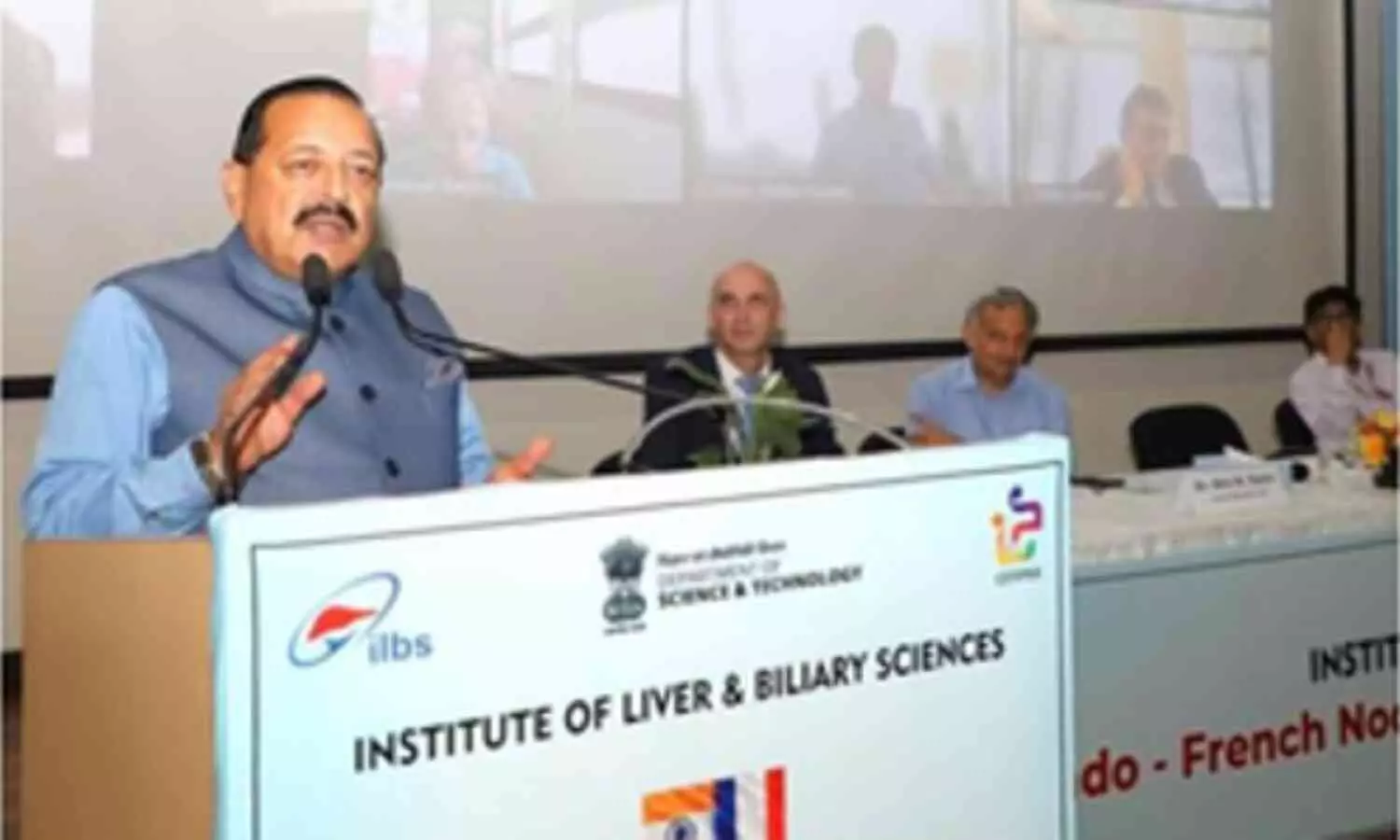1 in 3 People in India Suffer from Fatty Liver, Often Before Diabetes: Dr. Jitendra Singh

New Delhi: Every third person in India has a fatty liver, which predates Type-2 diabetes and other metabolic disorders, said Dr Jitendra Singh, Union Minister of State (Independent Charge) for Science and Technology, on Friday.
“Non-alcoholic fatty liver disease (NAFLD) -- a common metabolic liver disorder -- can progress to cirrhosis and primary liver cancer eventually. It predates diabetes, hypertension, heart disease, and many other diseases. As an endocrinologist myself, I understand the nuances of fatty liver and its relation with diabetes and other metabolic disorders,” said Dr Jitendra, a nationally renowned Diabetologist.
He was speaking at the launch of the Indo-French Liver and Metabolic Disease Network (InFLiMeN) -- a virtual node to prevent and cure metabolic liver diseases at the Institute of Liver and Biliary Sciences in the national Capital.
Eleven French and 17 Indian doctors will jointly work in this node.
“Both the Indian subcontinent and Europe are attributable to changes in lifestyle, diet and importantly metabolic syndromes such as diabetes and obesity which have contributed to a significant rise in NAFLD,” the minister said.
He added that in the Indian subcontinent, NAFLD occurs in about 20 per cent of non-obese patients, whereas in the West, most NAFLD is associated with obesity.
He further noted that both India and France have “a considerable burden of alcoholic liver disease (ALD).”
The Union Minister explained that both NAFLD and ALD exhibit a very similar progression from steatosis to steatohepatitis, cirrhosis, and HCC.
“India became a global leader not just in curative healthcare but also in preventive healthcare,” said Dr. Jitendra, highlighting India's progress in the last decade.
He stressed the need for India-specific diagnostics “as our phenotype is different”.
“There is an urgent need to develop simple, low-cost diagnostic tests for the detection of different stages of fatty liver and their progression to severe, full-blown diseases,” he said.
Importantly, he noted that the “approaches and algorithms should suit the Indian context, be low-priced, and have a point of care”.


